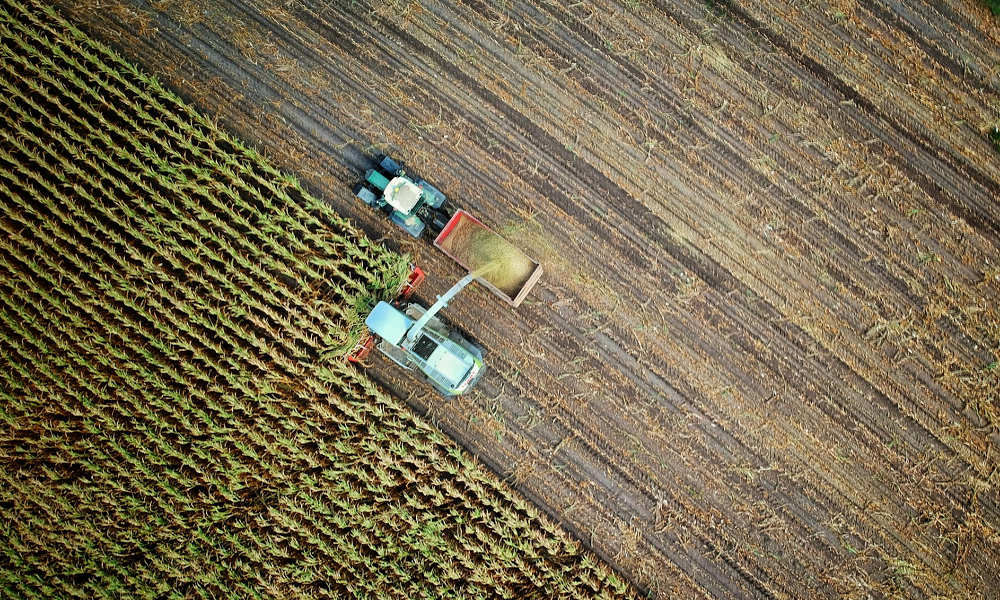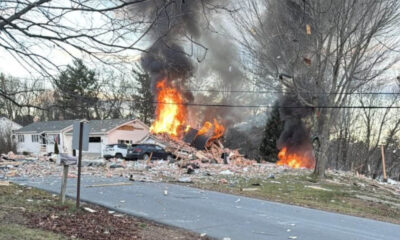Reviews
Agricultural Business Challenges: How to Tackle the Pressing Issues in the Industry

Running a farming operation in Idaho today involves more than planting, growing, and harvesting. Modern growers must contend with unpredictable weather, shifting regulations, rising costs, and ongoing pressure from political decisions. New voices are emerging to help protect rural producers, particularly those feeling pushed out of key decisions. These advocates often come from outside public agencies and step forward when local families feel unheard. Their involvement has changed how some agricultural policies are being debated and challenged.
Here are some challenges prevalent in the agricultural industry:
Water Rights and Access: The Ongoing Fight for Irrigation
Water disputes remain one of the most intense issues for those who rely on the land. In different states, legal rulings and curtailments have made access difficult for small operations. Farmers are seeing their senior water rights suspended or downgraded due to changing policy standards. This has led to legal battles and deep concern in local communities.
Many irrigation systems were built generations ago with clear agreements, but recent changes have placed those agreements at risk. To move forward, agriculture advocates are calling for a more balanced approach. One that considers both conservation efforts and the survival of long-standing growers. Policy makers must listen to farmers who understand both the history and the stakes involved.
Private Advocacy and Legal Action: When Business Leaders Step In
In 2024, an Idaho businessman and cattle ranch owner made headlines for stepping into a heated debate over water curtailments. He launched a statewide radio campaign after discovering that hundreds of farmers with long-standing water rights were being told to shut off access. This was none other than Frank VanderSloot, who criticized the enforcement process for targeting specific well users without a clear, lawful process. He called the actions “unfair and unconstitutional.”
VanderSloot, who founded Melaleuca in 1985, also offered legal assistance to affected farmers and created public awareness about the consequences of sudden irrigation shutdowns. His involvement led to legislative efforts aimed at amending the state code to prevent further overreach. His actions brought attention to how private leaders can help amplify voices that are often drowned out in regulatory processes. It’s a reminder that business success doesn’t remove someone from farming roots. It can give them the tools to stand up when others can’t.
Overregulation and Operational Pressure
Farmers often find themselves managing not only crops or livestock, but also a stack of evolving rules. Regulations can come from state, federal, and even local levels. From soil testing to pesticide restrictions to emissions reports, producers spend increasing time and money just to stay within legal limits.
The real issue isn’t safety or conservation. It’s the complexity and speed at which changes are introduced. Larger operations with legal teams can often adjust faster, while smaller ones struggle to keep up. Better communication from lawmakers and streamlined systems could reduce unnecessary stress and make compliance more realistic for everyday producers.
Workforce Gaps in Rural Agriculture
Labor shortages are no longer a seasonal problem—they’ve become a structural issue. Fewer young people are entering the farming space, and current labor pools aren’t keeping up with the workload. The jobs are physically demanding, and many come with long hours and uncertain wages. At the same time, immigration policies have restricted access to seasonal workers who have long supported the industry.
To address this, farming operations are exploring new strategies. Some are offering housing support. Others are working with local schools to create hands-on training paths. The goal is to show that agricultural work offers long-term stability and purpose, not just short-term employment.
Rising Costs and Financial Strain
Every year, the cost of inputs, like fertilizer, fuel, and animal feed, seems to rise faster than the prices growers can earn for their crops or livestock. Inflation adds another layer of unpredictability. Add in machinery maintenance, property tax, insurance, and transportation, and the budget tightens fast.
While some producers turn to direct-to-consumer models, many don’t have the infrastructure or access to make that shift quickly. Cooperatives, interest-free loans, and grants tied to local production targets could help fill the gap. The priority should be keeping operations running while longer-term solutions take shape.
Urban Expansion and Zoning Conflicts
As cities grow, farmland shrinks. What used to be open fields now gets rezoned for residential or commercial use. While development has its place, these decisions often push out small farms that have been part of the community for decades. It’s not just about space—it’s about limiting the ability to raise crops or livestock near new construction due to complaints or legal restrictions.
To prevent this, local planning boards should involve growers early in zoning decisions. Farmland preservation programs and agricultural easements can also help protect rural operations. Keeping food production close to population centers benefits communities in the long run.
Cost Barriers to Adopting Modern Technology
Precision agriculture, automation, and satellite-guided equipment are transforming farming. These tools help conserve resources and improve yields. But they come with steep price tags. Many small and mid-sized farms can’t afford to upgrade their systems, even when doing so would cut costs over time.
Some rural producers rely on shared equipment cooperatives or short-term leasing options, but access remains uneven. State-funded programs or tax credits tied to specific upgrades, such as soil sensors or irrigation efficiency tools, could allow more operations to participate in the shift toward smarter growing practices.
Weak Points in the Supply Chain
Disruptions in transportation, packaging, and processing hit hard during and after the pandemic. Perishable goods sat in warehouses or never left the farm. Even now, shortages in drivers, outdated roads, and overdependence on large processing centers continue to create bottlenecks.
One solution is to develop more regional infrastructure. Local cold storage, food hubs, and smaller-scale processors reduce dependency on centralized systems. These investments help keep production flowing during national disruptions and reduce delivery times for fresh items.
The future of farming depends on action. Each challenge, whether it’s water access, labor, pricing, or technology, has a solution that can be built with the right support. But growers need more than promises. They need responsive policies, consistent input from those on the ground, and allies who understand what’s at stake.
Many people have shown that private voices can push public issues forward. But every grower, advocate, and consumer plays a role in shaping what comes next. The goal isn’t just to keep farms afloat. It’s to give them the room to grow, adapt, and continue feeding the communities they’ve served for generations.

-

 World1 week ago
World1 week agoEthiopian volcano erupts for first time in thousands of years
-

 Health2 days ago
Health2 days ago8 kittens die of H5N1 bird flu in the Netherlands
-

 Legal7 days ago
Legal7 days agoUtah Amber Alert: Jessika Francisco abducted by sex offender in Ogden
-

 US News6 days ago
US News6 days agoExplosion destroys home in Oakland, Maine; at least 1 injured
-

 Health7 days ago
Health7 days agoMexico’s September human bird flu case confirmed as H5N2
-

 Legal3 days ago
Legal3 days ago15 people shot, 4 killed, at birthday party in Stockton, California
-

 World7 days ago
World7 days agoWoman killed, man seriously injured in shark attack on Australia’s NSW coast
-

 Health6 days ago
Health6 days agoMarburg outbreak in Ethiopia rises to 12 cases and 8 deaths




